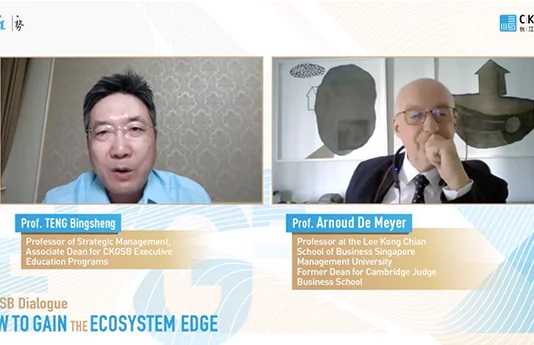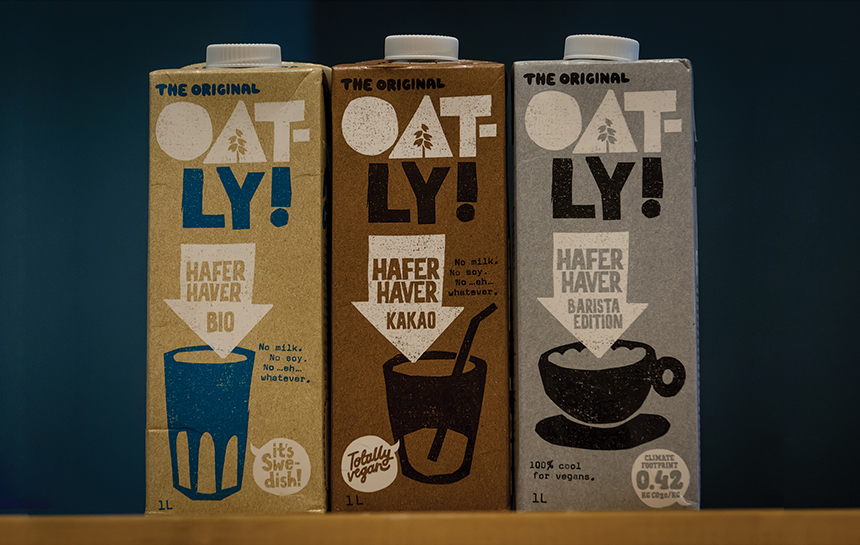As Bright Food buys up iconic breakfast brand Weetabix, questions arise over whether China is eyeing a larger takeover of Western food firms?
Most Beijingers begin their day with a bowl of hearty rice porridge or steaming hot noodles. If the Shanghai-headquartered Bright Food has its way, milk and cereal will finally find its place on breakfast tables here. While breakfast cereal is widely available in China, it is nowhere as popular as it is in the West. And Bright Dairy is out to change that.
In a bold move that shows how China’s companies are flexing their muscles in a diverse set of industries, Bright Food headed straight for the pantry early last month and acquired the iconic British breakfast cereal brand Weetabix.
Bright Food, one of China’s largest food companies, bought a 60% stake in Weetabix, putting a value of around $1.95 billion on the company. A family-owned company for generations, Weetabix was bought out in 2004 by a Texas private equity firm before being sold to Lion Capital. UK’s second-most popular cereal brand will now be controlled by Bright Food.
A Bright Future
Although an iconic brand, it seems that Weetabix had few others takers – other large UK companies such as Kellogg’s, which is currently the Number One cereal manufacturer in the country, would have run into monopoly concerns if they had entered the fray. On the other hand, Weetabix needed to expand internationally to secure its long-term future given that it had borrowings of about £900 million.
Welcoming the deal, Weetabix CEO Giles Turrell says, “We are excited about the next phase in the Weetabix Food Company growth plan and look forward to even greater levels of success in the future.” Bright Food’s partner Lion Capital sees China as a major new market for the future. “We are excited to continue our journey with the Weetabix brand, which has been an enormously successful investment, as we extend the business into China in partnership with Bright Food,” says Lyndon Lea, a partner at Lion Capital.
This is not Bright Food’s first global takeover, but it is by far the most significant – chairman Zongnan Wang hailed it as a “landmark acquisition.” This is the first time that it has acquired such an iconic brand, and it is also its first major European acquisition.
For Bright Food, a company with decidedly global ambitions, the logic is simple. Zongnan Wang says, “We are excited by the many growth opportunities for the business, especially in international markets, and Asia in particular. With Bright Food’s strong resources and our expertise in both the Chinese and broader international markets, we are excellently placed to develop the Weetabix business.”
This “supports Bright Food’s strategy of buying famous international brands, developing advanced technology and taking strong competitive positions in each of its markets,” as Bright Food’s company spokesman Pan Jianjun told China Daily. According to a recent case study written by CKGSB Center for the Study of Globalization, the company’s overseas acquisitions will help it to accelerate its pace of internationalization, build a global supply chain and have a strong global presence via international brands. Bright Food has met with mixed success in its global M&A spree. Although it finally acquired a 75% stake in Australia’s Manassen Food for more than $500 million and its dairy business bought a 51% stake in New Zealand dairy Synlait, bids for European companies have previously failed. The company has tried to buy stakes in United Biscuits, which makes Jaffa Cakes and Hula Hoops, and French yoghurt producer Yoplait.
This may have been due to a mismatch between the aspirations and structure of these European brands when compared to a Chinese state-owned company. Mike Bastin, Visiting Academic at Tsinghua University and researcher at Nottingham University’s School of Contemporary Chinese Studies, concurs. “Bright [Food] has attempted quite a few overseas takeovers and investments recently and probably failed due to a lack of experience and possibly transparency,” he says. But that doesn’t seem to deter the company. As the CKGSB case says, “Wang Zongnan believes that global expansion is one of the key strategies of the company, and that won’t change because of these failures.”
The ambition of Bright Food, and Chinese companies in general, seems to be increasing. “What we are seeing, and what we will continue to see, is Chinese companies taking steps to build their product and brand portfolios with an eye towards expands internationally and towards increasing competitiveness at home,” says Ben Cavender of China Market Research in Shanghai.
Integrating Icons
Despite being the UK’s best-selling single cereal brand, accounting for around 7% of cereal sales, Weetabix might find it tougher to break into a market such as China, where breakfast tastes are traditionally very different. The hope, at least for Weetabix and Bright Food, is that the market can only grow in the future. In a recent article in the Guardian, Marcia Mogelonsky, an expert on food and drink at the market researcher Mintel, said that there was “huge growth potential” for breakfast cereals in China, where just $665 million was spent on them last year, compared with $2.3 billion in the UK.
One way in which Bright Food can make Weetabix a success in China is by focusing on its status as an iconic brand. As China gets richer and its middle-class swells, so does consumer demand for high-quality products. In any case, Chinese consumers are known to be brand-conscious so brands that have an established history may well have the edge here.
Bright Food is likely to place heavy emphasis on promoting the history, quality and health and safety benefits of the brand in China as consumer tastes change. “A Weetabix breakfast with milk will become more accepted as a healthy and safe way to start the day and give the children nutritional value,” says Bastin. Nestle has adopted a similar ploy in recent years to establish a sizeable market share in China’s cereal market.
Given food safety concerns in China, “there is a sense in the marketplace that foreign brands may offer better assurances of product safety, so there is potential for the brand [Weetabix] to grow in China,” says Cavender.
Bright’s knowledge of the Chinese market also gives it an advantage, but whether it can successfully integrate its own culture with that of such an iconic brand is not yet clear. The acquisition of other iconic brands by companies in developing countries does suggest that there is room for optimism though. Whilst it is too early to say whether Geely’s takeover of Volvo will be a success for example, Lenovo’s takeover of IBM’s PC brand has been a tremendous success.
Another case in point is the acquisition of Tetley’s, another iconic UK brand, by India’s Tata Tea. It was difficult at first. There were cultural differences, and worries that the debt Tata Tea had accrued to acquire the loss-making Tetley’s would be a problem. However, the cultural differences were seen as differences in capability, and a synergy was created whereby the strengths of both companies were utilized. Tetley’s needed to expand into new markets given the shrinking UK market with increasing competition, and its iconic, high-end brand name meant that little needed to be done in order to promote the brand. Conversely, Tata Tea had struggled to market its own product as high-end brands, but could offer know-how of the Indian market and the ability to increase volumes. This understanding of the differences and the importance of maintaining Tetley as a brand has helped Tata Tetley to gain an increasing market share in India whilst maintaining its position in the UK.
Although there are challenges, there are also a number of benefits for Bright Food that come with the acquisition of such a well-known brand, says Cavender “The biggest benefits are probably improved access to distribution and effective marketing in foreign countries where the acquired brand has a strong presence as well as the potential ability to add a strong brand and new products to Bright’s domestic portfolio.” Chinese brands are also beginning to understand the need for branding themselves, and this will also help to change the market and the way in which Chinese food companies operate in general. Corporate branding from other food companies in China such as Wahaha and Mengniu will continue to evolve, helping to further drive a change in Chinese consumer tastes towards high-quality, branded food products.
“(However), Chinese companies realize that it can be difficult, and extremely expensive, to build awareness of existing brands and products in foreign markets and that market entry via acquisition can be a cost-effective way to gain access to distribution channels and new products,” says Cavender.
Food for Thought
Takeovers of major Western brands by Chinese companies are only likely to continue. In the food market in particular, there are concerns in the West that many companies will have no choice but to accept takeovers as they look to establish themselves in new markets. As Bastin says, “Food brands in the UK are under increasing threat from low-cost competitors, especially retailer own-brands. Also, the UK food shopper is far more economical and rational and, therefore, less prone to brand image and brand heritage, compared with Chinese shoppers who remain extremely brand conscious.”
There are a whole host of foreign food brands that appear to be putting up ‘for sale’ signs – a worrying trend that Lord Digby Jones, a former director-general of the Confederation of British Industry and current UK trade ambassador has long cautioned against.
“I have been waking people up for years to the fact that China and India wanted our lunch, but I never thought they would want our breakfast as well,” Lord Jones has long cautioned.
Whilst this might be hyperbole, rumors abound of other brands are likely to be taken over. Premier Foods is looking to offload unwanted brands, and whilst other foreign food giants such as Kellogg’s will surely compete for some of these names, Chinese firms such as Bright Food are now well-placed to make competitive offers.
“Right now Bright is rumoured to be in ‘advanced stages of negotiations’ with a French wine producer. Two of China’s other major food producers, COFCO and Wahaha, may also join Bright in overseas brand acquisition soon,” says Bastin.
This is happening because these brands see China and other developing markets as crucial for their long-term futures, given the saturation of the US and European markets and the cautious nature of consumers at this time. The question is whether or not Chinese consumers will be as hungry for such foreign lunches as the Chinese companies.

















